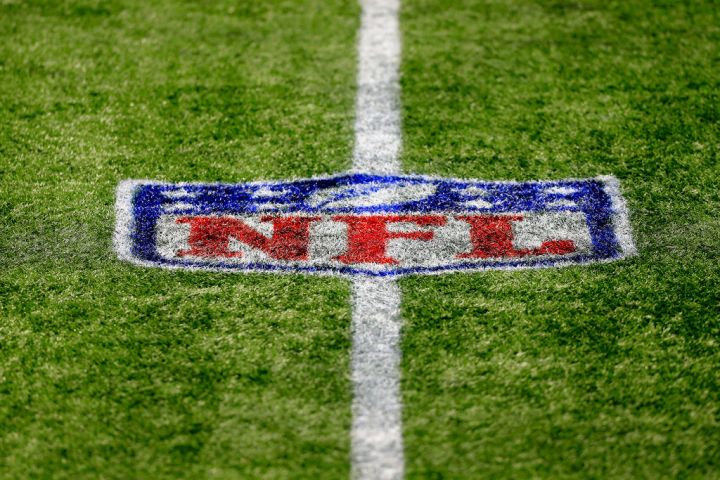
The average NFL stadium may as well be a space station. Between all the high-def jumbotrons, the Skycams dangling over the players, and the magical beer dispensers that fill pint glasses from the bottom, there’s enough technology in most pro football stadiums that it’s easy to assume that the playing field itself is the least advanced part of the entire complex.
But as it turns out, nothing could be further from the truth. The grass on NFL football fields is, without question, one of the most painstakingly planned out parts of the entire game.
Think about it: Grass is the ideal playing surface for football. Even with all the newfangled artificial variants and fancypants turf technologies that have sprung up to replace it, nothing matches the properties of real, natural grass. It is hard enough that a ball will bounce reliably and consistently on it, yet is still soft enough that it provides some cushion when you fall. It also provides the necessary traction to allow 300-pound linebackers to shove each other without slipping, yet at the same time, it has just enough “give” that when a running back makes a quick cut to evade a tackle, the grass will tear and divot instead of forcing the player’s joints to bear that strain alone.
“I would rather be on grass all the time,” says New England Patriots linebacker Brandon Copeland. “You definitely can feel a difference. Your knees just feel better, your body feels better. Artificial turf takes a toll on your joints. Not to sound like an old man or anything, but you can feel it for the next day or two in your knees and ankles and things like that. I’d much rather be over grass.”

This ideal mix of attributes is no accident. We all take it for granted, but that well-manicured greenery under the players’ cleats is the result of centuries of careful biological tinkering. Even now, turf scientists are still hard at work perfecting it, adapting it, and making it better for football.
Generally speaking, the grass that’s most commonly used in NFL stadiums is bermudagrass. It’s the most popular species for playing fields by a pretty wide margin. But what makes this particular grass variety better for football than, say, bluegrass, zoysia, or any of the other popular turfgrass species that exist?
“It’s because bermudagrass is particularly aggressive,” says Aaron Neufelder. As the farm manager of Grassmasters Sod Farm, he’s cultivated grass for more NFL stadiums than just about anyone else on Earth and is basically a walking encyclopedia on the topic of turf.
“Today there are hundreds of different cultivars and hybrids of bermudagrass, each with their own unique set of strengths and adaptations.”
“It fills itself in much better and makes for a better playing surface because it has a much better structure than most other grasses,” he explains, “which provides really good footing, stability wise. Biologically speaking, this is because bermudagrass has what are called stolons and rhizomes. Stolons are like creeping, above-ground leaves, and rhizomes are underground stems within the roots. Both of these spread out and send new plants wherever there’s a void, like in a divot or something. They’re constantly repairing themselves and knitting together beneath the surface. So that’s why Bermuda grass gets used a lot for football fields.”
But here’s the kicker: There’s not just one kind of bermudagrass. Ever since it arrived in the U.S in the mid-1700s (and probably before then, too) we humans have been fiddling with it and artificially steering its evolution through selective breeding. Today there are hundreds of different cultivars and hybrids of bermudagrass, each with its own unique set of strengths and adaptations.

“Here in Indiana, we select for winter tolerance,” says Neufelder. “So one of the main drawbacks to bermudagrass is the further North you go, if you don’t have a variety that’s been selected for winter tolerance, it could easily die. Like, if you get an icy, windy day where it gets down to minus 10 degrees, that might kill that bermudagrass.”
For this reason, stadiums have to choose a grass variety that’s adapted for the specific climate conditions of that area. The grass at Raymond James Stadium in Tampa, for example, is drastically different than the grass they use at Lambeau Field in Green Bay.
The craziest part, though, is that despite the fact that we literally have grasses that are optimized for different stadiums and regions, we’re still not satisfied. Turfgrass scientists are still out there tweaking, testing, and finding ever more ways to breed better grass for us to play on. In fact, there are entire university programs dedicated to doing so.
“The majority of the grasses in our area have been selected out of Oklahoma State University,” says Neufelder. “They have a really good turfgrass genetics and breeding program down there. The three main cultivars that we use are Latitude 36, Northbridge, and Tahoma 31 — and they all three came from that Oklahoma State program. There are some other top-notch breeding programs down South, too.”
So next time you find yourself standing on a football field, take a minute to stop and appreciate what you’re stepping on. It might just be the most streamlined, scientific, and sophisticated part of the sport.




